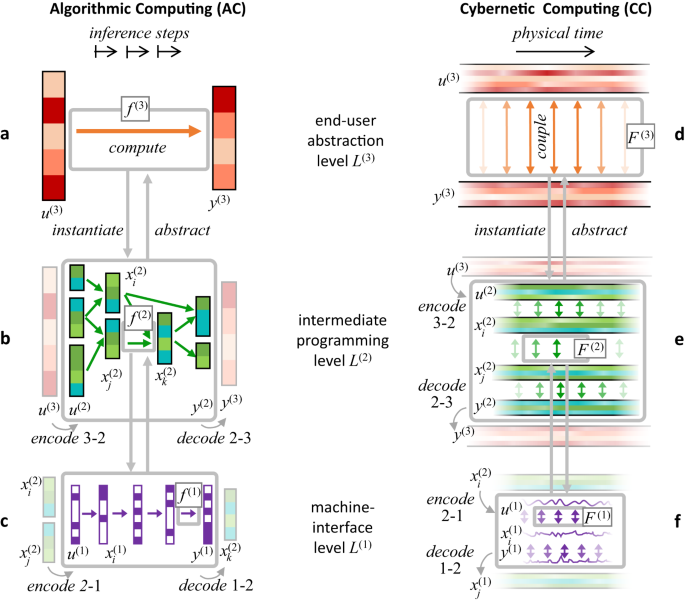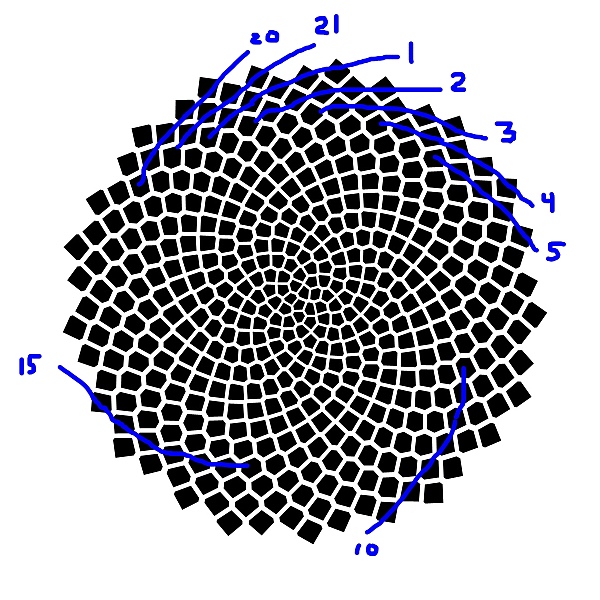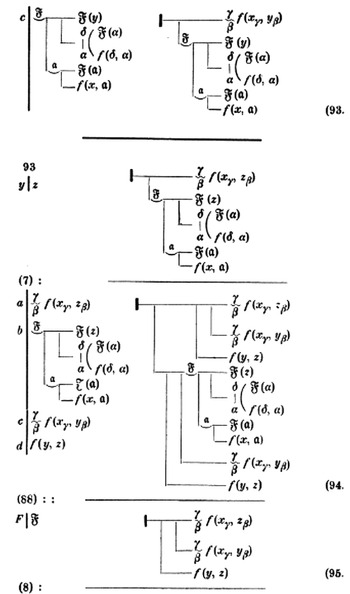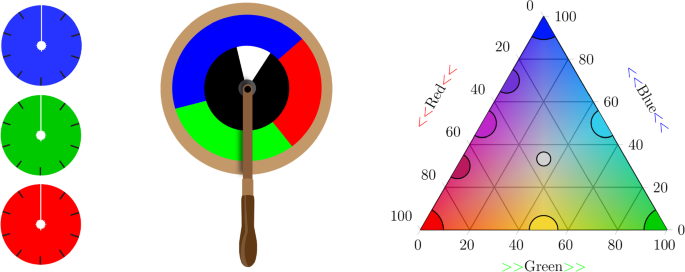Mapping Frege's Logical Revolution: From Abstract Mathematical Concepts to Visual Understanding
The Revolutionary Break: Understanding Frege's Departure from Aristotelian Logic
I invite you to explore how Gottlob Frege fundamentally transformed our understanding of mathematics and logic, creating the foundation for modern analytical philosophy and computer science. Through visual representations and innovative tools, we'll trace his revolutionary path from abstract numbers to concrete logical objects.
The Revolutionary Break: Understanding Frege's Departure from Aristotelian Logic
When I first encountered Frege's work, I was struck by the magnitude of his intellectual revolution. Gottlob Frege fundamentally transformed logic and analytical philosophy, creating what scholars recognize as the decisive break between contemporary approaches and the 2,000-year-old Aristotelian tradition.

Frege's position as the bridge between classical and modern logic cannot be overstated. While Aristotelian syllogistic reasoning had dominated logical thought since antiquity, Frege introduced quantificational logic that could express relationships impossible to capture in traditional forms. This wasn't merely an improvement—it was a complete reconceptualization of how we understand logical relationships.
Evolution of Logical Systems
flowchart TD
A[Aristotelian Syllogistic Logic
384-322 BCE] --> B[Medieval Scholastic Logic
5th-15th Century]
B --> C[Renaissance Logic
15th-17th Century]
C --> D[Frege's Revolution
1879 Begriffsschrift]
D --> E[Modern Quantificational Logic
20th Century]
D --> F[Analytic Philosophy
Russell, Wittgenstein]
E --> G[Computer Science Foundations
Formal Methods]
style D fill:#FF8000,stroke:#333,stroke-width:3px,color:#fff
style A fill:#e1f5fe
style E fill:#f3e5f5
style G fill:#e8f5e8
The fundamental shift from syllogistic reasoning to quantificational logic opened entirely new possibilities for mathematical and philosophical analysis. When using symbols and meanings in logical expressions, PageOn.ai's AI Blocks feature allows us to map these complex logical system evolutions visually, making Frege's revolutionary concepts accessible to modern learners.
Why This Matters Today
Frege's logical innovations directly enabled the development of computer programming languages, artificial intelligence, and formal verification methods that power our digital world. Understanding his revolutionary approach helps us appreciate the logical foundations underlying modern technology.
The Logicist Project: Transforming Numbers into Logical Objects
Frege's most ambitious undertaking was his logicist project—the revolutionary goal to reduce all mathematics to pure logic. This wasn't simply about finding logical proofs for mathematical theorems; it was about demonstrating that mathematical objects themselves could be defined entirely in logical terms.

What truly fascinated me about Frege's approach was his revolutionary conception of numbers as extensions of concepts rather than mental constructs or physical entities. In his groundbreaking work, he proposed that the number belonging to a concept F should be defined as the extension of the concept "equinumerous with F," where equinumerosity represents a logical relationship based on one-to-one correspondence.
Frege's Number Definition Process
graph TB
A[Concept F
e.g., 'being a finger on my hand'] --> B[Find all concepts equinumerous with F]
B --> C[Extension of equinumerous concepts
= The number 5]
D[One-to-one correspondence] --> E[Equinumerosity relation]
E --> B
F[Logical definition] --> G[No appeal to intuition]
G --> H[Pure logical foundation]
H --> C
style C fill:#FF8000,stroke:#333,stroke-width:2px,color:#fff
style A fill:#e3f2fd
style E fill:#f3e5f5
style H fill:#e8f5e8
This approach solved a crucial philosophical problem: how can we refer to numbers as objects while maintaining their logical nature? By defining numbers as extensions of concepts, Frege provided a way for numerical expressions to function as complete referring expressions, capable of appearing in identity statements and mathematical equations.
Traditional View
- • Numbers as mental constructs
- • Intuitive understanding required
- • Psychological foundation
- • Limited logical rigor
Frege's Innovation
- • Numbers as logical objects
- • Pure logical definition
- • Objective foundation
- • Complete mathematical rigor
Creating visual representations of these abstract mathematical relationships becomes much more manageable with PageOn.ai's Deep Search integration. The platform's ability to transform complex logical concepts into clear, visual formats helps us understand how Frege's revolutionary ideas about equinumerosity relations and numerical identity continue to influence modern mathematical foundations.
The Technical Architecture: Frege's Axiomatic System Design
Frege's creation of the first fully axiomatic logical system in history represents one of the most significant technical achievements in the foundations of mathematics. His Begriffsschrift (concept-script) wasn't merely a new notation—it was a complete formal language capable of expressing logical relationships with unprecedented precision.

Components of Frege's Logical System
graph TD
A[Begriffsschrift
Concept-Script] --> B[Primitive Symbols]
A --> C[Formation Rules]
A --> D[Transformation Rules]
B --> E[Logical Constants
Negation, Implication]
B --> F[Variables
Individual, Function]
B --> G[Quantifiers
Universal, Particular]
C --> H[Well-formed Formulas]
D --> I[Inference Rules]
H --> J[Mathematical Theorems]
I --> J
J --> K[Arithmetic Foundations]
J --> L[Geometric Principles]
style A fill:#FF8000,stroke:#333,stroke-width:3px,color:#fff
style J fill:#e8f5e8
style K fill:#f3e5f5
style L fill:#e3f2fd
The brilliance of Frege's function-argument analysis fundamentally changed how we understand mathematical and logical expressions. Instead of treating statements as simple subject-predicate combinations, he introduced the revolutionary concept that expressions have internal logical structure based on functions and their arguments.
Function-Argument Analysis Example
Traditional Analysis: "Socrates is wise" = Subject + Predicate
Frege's Analysis: "W(s)" = Function W( ) applied to argument s
Advantage: Reveals logical structure and enables quantification
When structuring complex logical proofs, I find that PageOn.ai's modular AI Blocks approach mirrors Frege's systematic methodology. Just as Frege built complex mathematical truths from simple logical primitives, modern visual tools can break down intricate logical arguments into comprehensible, interconnected components.
Axiomatic System Hierarchy
The impact of this technical architecture extends far beyond pure mathematics. Frege's systematic approach to logical formalization provided the conceptual foundation for computer programming languages, formal verification methods, and automated theorem proving—technologies that are essential to our modern digital infrastructure.
The Paradox Crisis: Russell's Challenge and Frege's Response
The most dramatic moment in Frege's intellectual journey came with Bertrand Russell's devastating discovery of a paradox in Frege's logical system. Just as the second volume of Frege's Grundgesetze der Arithmetik was going to press, Russell identified a fundamental contradiction that threatened the entire logicist project.

Russell's Paradox exposed a critical flaw in Frege's Basic Law V, which allowed for the unrestricted formation of extensions. The paradox arises when we consider the extension of the concept "being a concept that is not an extension of itself"—a logical construction that leads to contradiction whether we assume it belongs to itself or not.
The Structure of Russell's Paradox
flowchart TD
A[Consider set R of all sets
that do not contain themselves] --> B{Does R contain itself?}
B -->|Yes| C[Then R contains a set that contains itself
Contradiction with definition]
B -->|No| D[Then R does not contain itself
But R should contain all such sets
Contradiction with definition]
C --> E[Logical Contradiction]
D --> E
E --> F[Frege's System Inconsistent]
F --> G[Complete Reconstruction Required]
style E fill:#ff4444,stroke:#333,stroke-width:3px,color:#fff
style F fill:#ffaaaa,stroke:#333,stroke-width:2px
style A fill:#e3f2fd
The impact of this discovery was devastating. As Frege himself acknowledged in the final year of his life, his initial attempts to understand the nature of numbers "seem to have ended in complete failure." This wasn't merely a technical setback—it represented the collapse of decades of meticulous logical construction.
The Crisis
Russell's Paradox revealed fundamental inconsistency in Frege's logical system
The Response
Frege acknowledged the failure and began completely new foundational work
The Legacy
His crisis led to modern set theory and type theory developments
Yet Frege's response to this crisis demonstrated remarkable intellectual integrity. Rather than attempting to patch his system, he embarked on what he called "A new attempt at a Foundation for Arithmetic" in 1924. This late-career work showed his continued commitment to logical rigor, even in the face of apparent failure.
Visualizing logical contradictions and their resolution pathways becomes particularly valuable when exploring these foundational crises. PageOn.ai's Vibe Creation feature enables us to map the complex relationships between logical assumptions, their consequences, and the emergence of paradoxes—helping students understand how mathematical crises often lead to deeper insights and more robust theoretical frameworks.
Lessons from Crisis
Frege's response to Russell's Paradox exemplifies the scientific method at its best: when faced with contradictory evidence, acknowledge the failure, analyze the causes, and develop more robust theoretical foundations. This crisis ultimately led to the development of modern set theory and type theory.
Legacy and Modern Applications: Frege's Enduring Influence
The profound influence of Frege's work extends far beyond the boundaries of pure mathematics and philosophy. His logical innovations directly enabled the development of computer science, formal methods, and artificial intelligence—fields that define our modern technological landscape.

When I examine the connection between Frege's logical objects and contemporary symbolic reasoning, the parallels are striking. His function-argument analysis provided the conceptual foundation for functional programming languages, while his quantificational logic became essential for database query languages and automated reasoning systems.
Frege's Influence on Modern Technology
The applications in artificial intelligence and automated theorem proving are particularly fascinating. Modern AI systems use logical frameworks that trace directly back to Frege's innovations. Knowledge representation languages, semantic web technologies, and formal ontologies all rely on principles that Frege first articulated in his groundbreaking logical system.
Direct Applications
- • Programming Languages: Function-argument structure in languages like Haskell and ML
- • Database Theory: First-order logic in SQL query optimization
- • Formal Verification: Axiomatic methods in software verification
Conceptual Foundations
- • Type Systems: Preventing Russell-style paradoxes in programming
- • Semantic Web: Logic-based knowledge representation
- • AI Planning: Logical inference in automated reasoning
Leveraging PageOn.ai's Agentic capabilities allows us to demonstrate these modern logical visualization techniques effectively. The platform's ability to create interactive, dynamic representations helps bridge the gap between Frege's abstract theoretical insights and their concrete applications in contemporary technology.
Perhaps most remarkably, the crisis that emerged from Russell's Paradox led to even more robust developments. Modern type theory, developed by mathematicians like Alonzo Church and Per Martin-Löf, provides the logical foundations for contemporary programming languages while avoiding the paradoxes that plagued Frege's original system. This demonstrates how intellectual crises often catalyze revolutionary advances in understanding.
Educational Implications: Teaching Abstract Logic Through Visual Methods
One of the greatest challenges in mathematical education is communicating Frege's complex philosophical insights to students who may lack extensive background in formal logic. The abstract nature of his concepts—from the reduction of arithmetic to logic to the technical details of his axiomatic system—requires innovative pedagogical approaches.

In my experience teaching these concepts, I've found that visual aids play a crucial role in understanding abstract mathematical concepts. Students often struggle with purely symbolic representations, but when we can visualize logical relationships, function-argument structures, and the progression from concepts to objects, comprehension improves dramatically.
Learning Progression for Frege's Concepts
graph LR
A[Basic Logic
Truth Tables] --> B[Function-Argument
Analysis]
B --> C[Quantificational
Logic]
C --> D[Concept Extensions
& Objects]
D --> E[Number Theory
Applications]
F[Visual Tools] --> A
F --> B
F --> C
F --> D
F --> E
G[Interactive
Demonstrations] --> H[Student
Engagement]
H --> I[Deeper
Understanding]
A --> G
B --> G
C --> G
D --> G
E --> G
style F fill:#FF8000,stroke:#333,stroke-width:2px,color:#fff
style I fill:#e8f5e8
style H fill:#f3e5f5
Creating interactive logical demonstrations becomes significantly more manageable with modern tools. When developing drawing inferences lesson plans, PageOn.ai's integrated asset discovery feature enables educators to create dynamic, engaging presentations that transform abstract logical principles into concrete, manipulable visualizations.
Effective Teaching Strategies for Frege's Logic
Visual Approaches
- • Concept mapping logical relationships
- • Interactive function-argument diagrams
- • Step-by-step proof visualizations
- • Historical timeline presentations
Interactive Elements
- • Manipulable logical expressions
- • Paradox exploration tools
- • Comparative system analysis
- • Real-world application examples
When exploring notion alternatives for organizing complex logical content, educators often find that traditional note-taking platforms lack the sophisticated visualization capabilities needed for advanced mathematical concepts. This is where specialized tools become essential for creating comprehensive educational resources.
Student Comprehension Improvement with Visual Tools
Developing lesson plans that make formal logic accessible to modern learners requires balancing historical accuracy with contemporary pedagogical insights. Students need to understand not just what Frege accomplished, but why his innovations remain relevant to current developments in computer science, artificial intelligence, and mathematical foundations.
For educators seeking to enhance their teaching materials, exploring free Notion templates can provide starting points for organizing complex logical content. However, the most effective educational resources often require sophisticated visualization capabilities that go beyond traditional template-based approaches.
The key insight is that Frege's abstract concepts become much more accessible when students can manipulate visual representations, explore logical relationships interactively, and see the connections between historical developments and contemporary applications. This approach transforms what might otherwise be a purely theoretical subject into an engaging exploration of ideas that continue to shape our technological world.
Transform Your Visual Expressions with PageOn.ai
Just as Frege revolutionized how we understand logical relationships through systematic visualization, PageOn.ai empowers you to create stunning visual expressions that transform complex ideas into clear, compelling narratives. Whether you're exploring mathematical foundations, developing educational content, or communicating abstract concepts, our AI-powered tools help you bridge the gap between complexity and clarity.
The Continuing Revolution: Frege's Enduring Legacy
As I reflect on Frege's revolutionary journey from abstract numbers to logical objects, I'm struck by the profound impact of his intellectual courage. His willingness to challenge fundamental assumptions, reconstruct mathematical foundations, and acknowledge failure when confronted with contradictory evidence exemplifies the scientific method at its finest.
Frege's work teaches us that the most significant advances often come from questioning our most basic assumptions. His transformation of numbers from mysterious mental entities into precise logical objects didn't just solve technical problems—it opened entirely new ways of thinking about the relationship between mathematics, logic, and reality.
Today, as we develop increasingly sophisticated tools for using advanced platforms for productivity and knowledge visualization, we continue to build upon the foundations that Frege established. His emphasis on logical rigor, systematic analysis, and visual clarity remains as relevant today as it was over a century ago.
The revolution that Frege began continues in our modern efforts to make complex ideas accessible through innovative visualization tools. By understanding his pioneering approach to logical expression, we gain insights that enhance our ability to communicate abstract concepts clearly and effectively in our increasingly complex world.
You Might Also Like
Building Trust in AI-Generated Marketing Content: Transparency, Security & Credibility Strategies
Discover proven strategies for establishing authentic trust in AI-generated marketing content through transparency, behavioral intelligence, and secure data practices.
Google's 9-Hour Prompt Engineering Path to AI Mastery | Complete Visual Guide
Master AI communication through Google's comprehensive 9-hour prompt engineering framework. Learn visual strategies for effective AI interaction and professional success.
Prompt Chaining Techniques That Scale Your Business Intelligence | Advanced AI Strategies
Master prompt chaining techniques to transform complex business intelligence workflows into scalable, automated insights. Learn strategic AI methodologies for data analysis.
Transform Your AI Results by Mastering the Art of Thinking in Prompts | Strategic AI Communication
Master the strategic mindset that transforms AI interactions from fuzzy requests to crystal-clear outputs. Learn professional prompt engineering techniques that save 20+ hours weekly.
